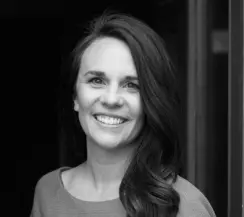 | 1 LU |
 | 1 LU |
New Hope-Solebury School District aspires to foster passionate, innovative, and confident learners who fulfill their “portrait of a graduate.” To help support this mission, the school district sought to create a hub for STEAM activities that would inspire students to discover, build, and create within a series of distinct but interconnected zones. The project transformed an outdated and uninspiring space into a dynamic, technology-rich hub for engineering, multimedia, fabrication, and robotics while ensuring flexibility and capacity to adapt over time as curriculum and student interests evolve. This session will explore the framework to achieve student success; interdisciplinary convergence, collaboration, collegiality, experimentation, and socialization all of which support the full experience of innovation and expand the learning environment beyond traditional barriers. Program elements and design solutions of this interdisciplinary space will be presented through the case study including a robotics lab and arena, collaboration lab, video production and editing areas, material cave, maker space, and digital fabrication lab are knit together by “the street,” a common connecting thread that runs the width of the space. Using openings to the corridors and between program areas to establish internal visual connection to the school community. The flexibility of the space achieves a balance of formality and informality, accessibility, and inclusivity and inspires learners to explore different disciplines, play around, and get hands-on with exciting and experiential learning practices, and work with groups they may not have been able to in the confines of a traditional classroom. This space is envisioned as a central hub of learning with connections to other academic programs such as business to support and enhance opportunities for entrepreneurship. Presenters will illustrate how the incorporation technology with opportunities for tactile interaction and visualization of ideas, ultimately equip students with tools they will use past schooling, along with a natural, cultivated curiosity that inspires them to ask, explore, and create. The session will also highlight how the application of the framework combines with creative design solutions can address deficiencies in our learning environments with a relatively small-scale space and limited budget.
Learning Objectives:

Matt is an expert in the design of engaging learning environments for early childhood, K-12, and higher education. Matt is known for his ability to listen to clients’ needs, understand their values, and create spaces that maximize their potential all while helping to build community and achieve pedagogical goals, ultimately empowering students to succeed. His work for leading education clients has contributed to the design of schools throughout New Jersey, Pennsylvania, and New York.

This track addresses the Response to real-world events and experiences that impact our daily life and our ability to function normally and be productive. The response to these occurrences is reflected in the learning environments we create and leads to the question – how can schools respond to real-world crises in a way that supports the well-being of occupants and our students' learning journey? How do we respond with approaches and strategies that may be used to balance the inability and lack of needed financial resources to address deficiencies within our learning environments’ infrastructure? Topics expand on the Art approach to the theme, but also include Science in the form of findings and outcomes through case studies and examples of successful responses to real-world conditions and events such as the COVID-19 pandemic, climate change, declining student enrollment, economics, equity, and other topics.
Primary Core Competency
Design of Educational Facilities: Acts as a resource to the design team in providing ongoing guidance and support to ensure that the emerging and ultimate design aligns with the established community vision, education goals, future programming, written design standards, best/next practices and education policy.